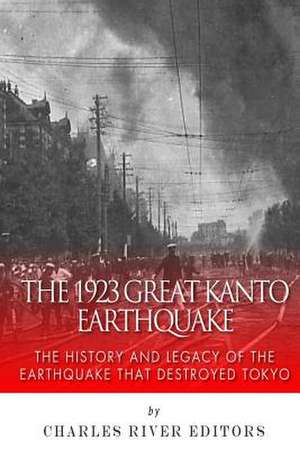The 1923 Great Kanto Earthquake
Autor Charles River Editorsen Limba Engleză Paperback
Preț: 46.48 lei
Nou
Puncte Express: 70
Preț estimativ în valută:
8.90€ • 9.17$ • 7.50£
8.90€ • 9.17$ • 7.50£
Carte tipărită la comandă
Livrare economică 27 februarie-13 martie
Preluare comenzi: 021 569.72.76
Specificații
ISBN-13: 9781505809411
ISBN-10: 150580941X
Pagini: 56
Dimensiuni: 152 x 229 x 3 mm
Greutate: 0.09 kg
Editura: CREATESPACE
ISBN-10: 150580941X
Pagini: 56
Dimensiuni: 152 x 229 x 3 mm
Greutate: 0.09 kg
Editura: CREATESPACE
